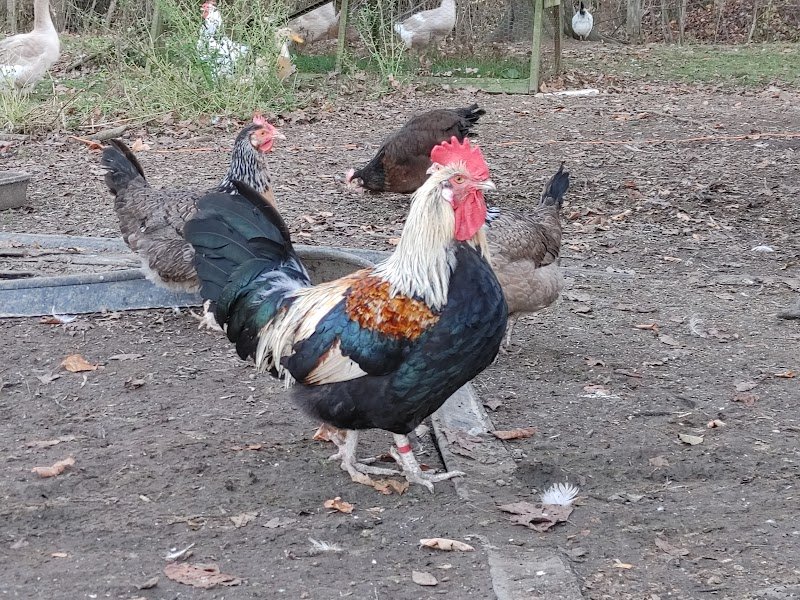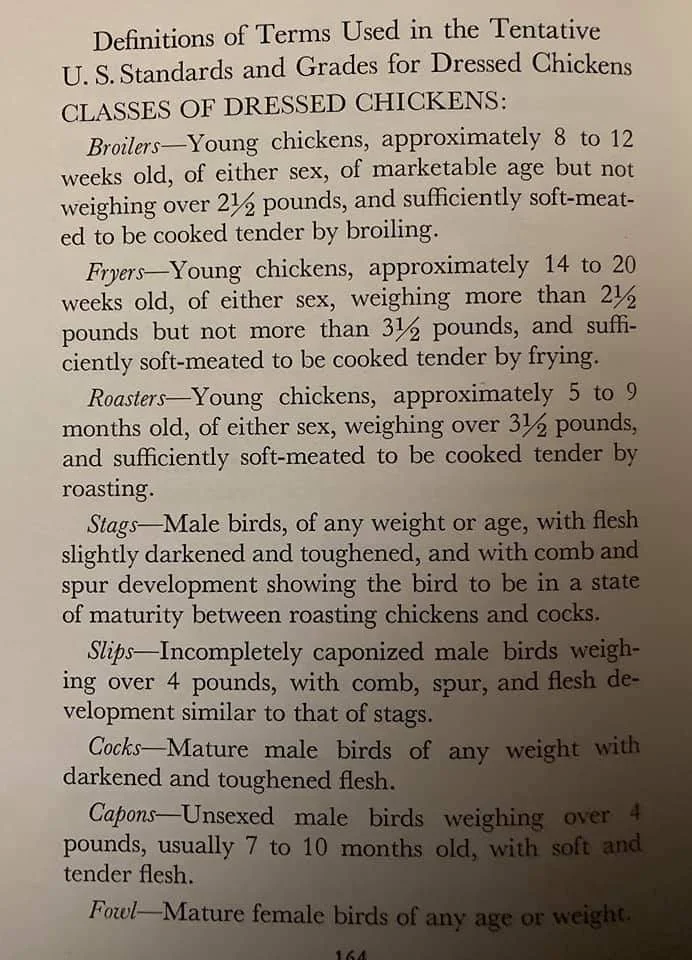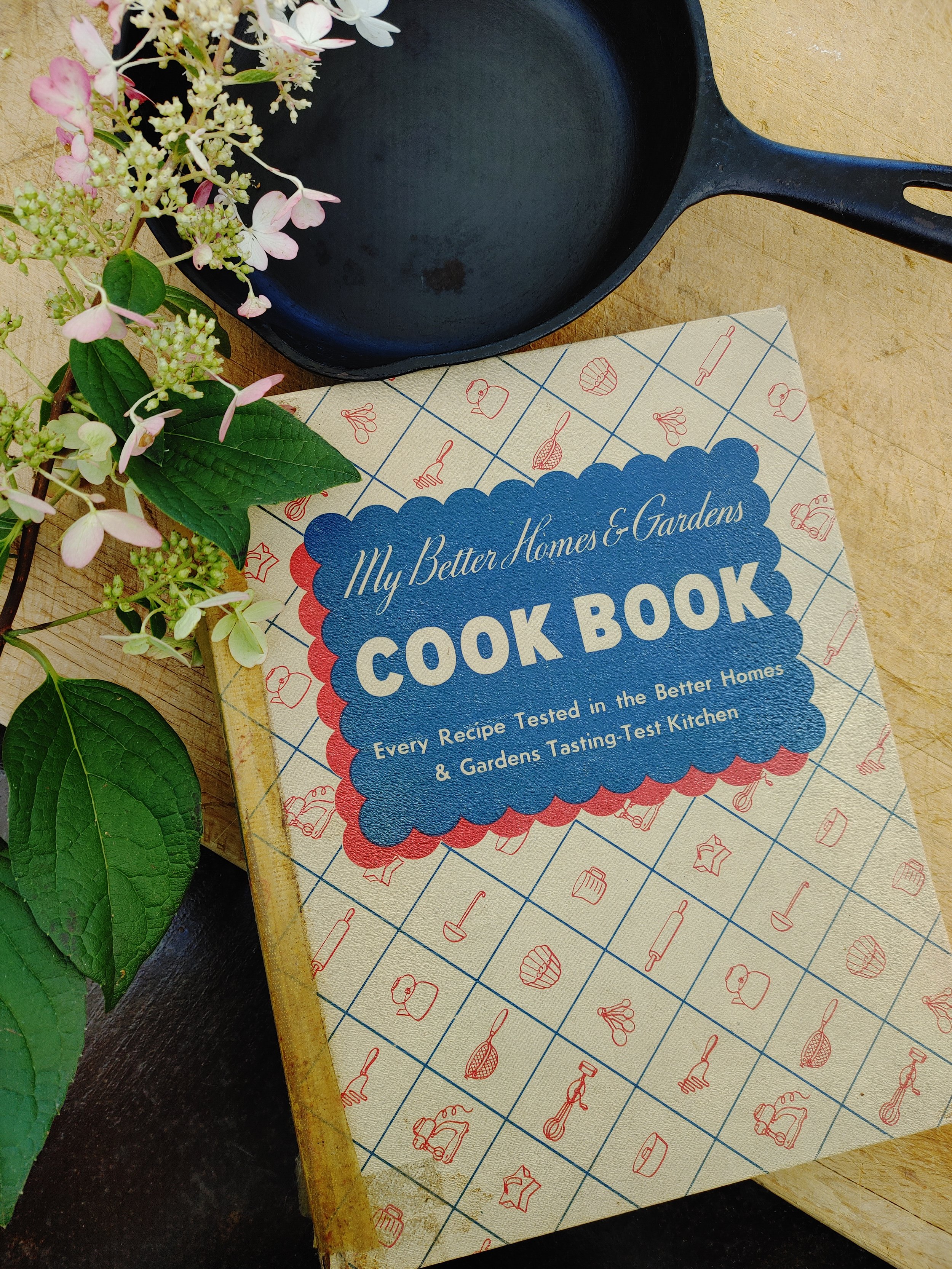Dorkings in the 1940’s Kitchen
Below is a neat and very useful list of terms for different butchered chickens. This a great resource to use to determine how to use your Dorkings at various ages. This is taken, verbatim, from a USDA booklet that was published in 1940. Though the descriptions are still perfectly suitable for the home kitchen and farm, most state governments, processors, and grocers do not use the same definitions anymore. For the most part, all have now been condensed into one term, and that is simply “broiler”. Our grandmothers and their mothers probably knew these, but most of us nowadays do not. I hope you enjoy this and the few old recipes that follow.
Definitions of Terms Used in the Tentative U. S. Standards and Grades for Dressed Chickens
CLASSES OF DRESSED CHICKENS
Broilers- Young chickens, approximately 8 to 12 weeks old, of either sex, of marketable age but not weighing over 2½ pounds, and sufficiently soft-meated to be cooked tender by broiling.
Fryers- Young chickens, approximately 14 to 20 weeks old, of either sex, weighing more than 2½ pounds but not more than 3½ pounds, and sufficiently soft-meated to be cooked tender by frying.
Roasters- Young chickens, approximately 5 to 9 months old, of either sex, weighing over 3½ and sufficiently soft-meated to be cooked tender by roasting.
Stags- Male birds of any weight or age with flesh slightly darkened and toughened, and with comb and spur development showing the bird to be in a state of maturity between roasting chickens and cocks.
Slips- Incompletely caponized male birds weighing over 4 pounds, with comb, spur, and flesh development similar to that of stags.
Cocks- Mature male birds of any weight with darkened and toughened flesh.
Capons- Unsexed male birds weighing over 4 pounds, usually 7 to 10 months old, with soft and tender flesh.
Fowl- Mature female birds of any age or weight.
“The Chicken of Tomorrow” was the turning point in modern chicken production. This eventually gave way to the factory suited broiler chicken we see in every 4-H show and supermarket today. When researching recipes for your heritage poultry, try to find those that were printed and used prior to 1948. These will be the the most similar to the chicken you’re working with.
Here are a few basic old recipes. These are very simple, with many assumptions, implying you know your way around the kitchen. Use your own judgment. They are good, old fashioned instructions on how we can cook our Dorkings or other heritage chickens. These recipes were written for housewives a few years before “The Chicken of Tomorrow” contests, which introduced us to the precursors of the modern Cornish Cross broiler that we see everywhere today. The recipes are taken, verbatim, from a great old cookbook that my Grammy gave me, My Better Homes and Gardens Cookbook, Fifth Edition, Thirty-Seventh Printing, May, 1940.
Broiled Chicken
Select 2-pound chicken suitable for broiling. Halve lengthwise and break hip, wing, and knee joints; if desired, remove backbone. Rub with fat and sprinkle with salt. Preheat broiler oven to 350*. Place chicken skin side down; 5 inches from heat, until brown. Turn skin side up and brown on second side. Total Broiling time is 45 to 60 minutes. Serves 2.
Fried Chicken
Select chicken suitable for frying. Clean chicken and cut in serving pieces. Roll in flour seasoned with salt and pepper; brown on both sides in ½ cup very hot fat. Reduce heat and cook slowly about 1 hour, turning pieces to brown evenly on all sides. Or finish cooking in a moderately slow oven (325*). Make cream gravy from pan drippings. Chicken may be fried by dipping in batter of 1 cup flour, ½ teaspoon salt, ¼ teaspoon pepper, 2/3 cup milk, and 2 eggs and frying in deep fat (375*).
Roast Chicken
Select chicken suitable for roasting. Have chicken dressed, drawn, and leg tendons cut. Wash outside with cold water; wipe inside with damp cloth; dry thoroughly. Sprinkle inside with salt. Stuff quite firmly but do not pack, Use 1 cup any preferred stuffing for each pound of chicken. Insert toothpicks across opening and lace cord around them. Fold skin of neck over back and fasten with toothpicks or large pin. Fold wings across back with tips touching. Tie ends of legs together with strong cord; bring cord down around tail and forward over tips of wings; tie across back. Rub with unsalted fat and place on rack in roaster Roast, uncovered, in moderately slow oven (300* - 350*) 30 minutes per pound for chicken under 3½ pounds, 22-25 minutes per pound for chicken over 4 pounds. Or place, breast side down, in hot oven (450*) until brown, then in moderately slow oven (300* - 350*)for remaining time. Chicken may be turned breast side up and covered with fat-moistened strip of cloth the last half of the roasting time. Baste with melted fat every 30 minutes. If desired, make paste of ½ cup unsalted fat and ½ cup flour; rub over chicken. Chicken over one year old may be covered during roasting.
Stewed Chicken
Select 3½ to 5 pound fowl; disjoint or leave whole; cover with hot water; add 1 to 2 teaspoons salt and simmer until meat is tender and falls away from bone, 1½ to 2½ hours. Cool in broth. For more flavor, add 1 carrot, 1 onion, 1 stalk celery, 1 whole clove, and 2 whole black peppers. Noodles or dumplings may be cooked in broth, or it may be used for chicken a la king, pressed chicken, or as a base for soups.
Here’s a couple photos of Colored Dorkings, pullets and cock




